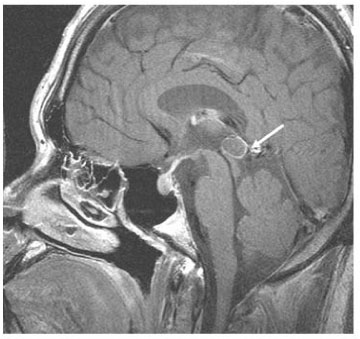J Korean Soc Endocrinol.
2006 Jun;21(3):257-260. 10.3803/jkes.2006.21.3.257.
A Case of Patient with Opioid-Induced Adrenocortical Insufficiency and Hypogonadism
- Affiliations
-
- 1Department of Internal Medicine, Yonsei University College of Medicine, Korea.
- KMID: 2200739
- DOI: http://doi.org/10.3803/jkes.2006.21.3.257
Abstract
- Opioids are known to decrease plasma cortisol and testosterone level in human and other mammals. Nowadays, opioid use is exponentially increasing, but little is known about its side effects. With the help of progressive human science, we can habit longer life and as result, are becoming more avid for healthy life. In this respect, analgesics play important role in maintaining good and healthy quality of life. For this reason, it is important to fully understand its side effects and handle it with special precaution. We are reporting a 22-year-old male who had been taken opioid analgesic for more than six years to relieve chronic, intractable headache. Then, his hormone test revealed hypogonadotropic hypogonadism combined with hypoadrenocorticotropic hypoadrenalism but showed no definite clinical features except for sexual frigidity. After two years of oxycodon discontinuation, we reevaluated that his hormone test, and all other laboratory tests returned to the normal range.
MeSH Terms
Figure
Reference
-
1. Daniell HW. Hypogonadism in men consuming sustained-action oral opioids. J Pain. 2002. 3:377–384.2. Daniell HW. Narcotic-induced hypogonadism during therapy for heroin addiction. J Addict Dis. 2002. 21:47–53.3. Olthmanns KM, Fehm HL, Peters A. Chronic fetanyl application induces adrenocortical insufficiency. J Intern Med. 2005. 257:478–480.4. Sarnyai Z, Shaham Y, Heinrichs SC. The role of corticotropin-releasing factor in drug addiction. Pharmacol Rev. 2001. 53:209–243.5. Lenz GR, Evans SM, Walter DE. Opiates. 1986. New York: Academic Press;89–93.6. Slamberova R, Rimanoczy A, Riley MA, Vathy I. Hypothalamo-pituitary-adrenal axis regulated stress response and negative feedback sensitivity is altered by prenatal morphine exposure in adult female rats. Neuroendocrinology. 2004. 80:192–200.7. Abs R, Verhelst J, Maeyaert J, Van Buyten JP, Opsomer F, Adriaensen H, Verlooy J, Van Havenbergh T, Smet M, Van Acker K. Endocrine consequences of long-term intrathecal administration of opioids. J Clin Endocrinol Metab. 2000. 85:2215–2222.8. Delitala G, Grossman A, Besser M. Differential effects of opiate peptides and alkaloids on anterior pituitary hormone secretion. Neuroendocrinology. 1983. 37:275–279.9. Wildt L, Leyendecker G, Sir-Petermann T, Waibel-Treber S. Treatment with naltrexone in hypothalamic ovarian failure: induction of ovulation and pregnancy. Hum Reprod. 1993. 8:350–358.10. Goodman RL, Parfitt DB, Evans NP, Dahl GE, Karsch FJ. Endogenous opioid peptides control the amplitude and shape of gonadotropin-releasing hormone pulses in the ewe. Endocrinology. 1995. 136:2412–2420.11. Genazzani AD, Petraglia F, Gastaldi M, Volpogni C, Gamba O, Genazzani AR. Naltrexone treatment restores menstrual cycles in patients with weight loss-related amenorrhea. Fertil Steril. 1995. 64:951–956.12. Gindoff PR, Ferin M. Endogenous opioid peptides modulate the effect of corticotropin-releasing factor on gonadotropin release in the primate. Endocrinology. 1987. 121:837–842.13. Marshall WA, Tanner JM. Growth and physiological development during adolescence. Annu Rev Med. 1968. 19:283–300.
- Full Text Links
- Actions
-
Cited
- CITED
-
- Close
- Share
- Similar articles
-
- Opioids Use and Adrenal Insufficiency
- A Case Report of Bilateral Adrenocortical Carcinoma Complicated by Adrenal Insufficiency
- A Case of Addison's Disease: Partial Recovery of Adrenocortical Function Following Antituberculous Medication
- Adrenocortical Insufficiency due to Spontaneous Bilateral Adrenal Hemorrhage Presented as Acute Abdominal Pain
- Opioid-induced Muscle Rigidity with a Delayed Manifestation Misunderstood as a Tension Pneumothorax: A case report


